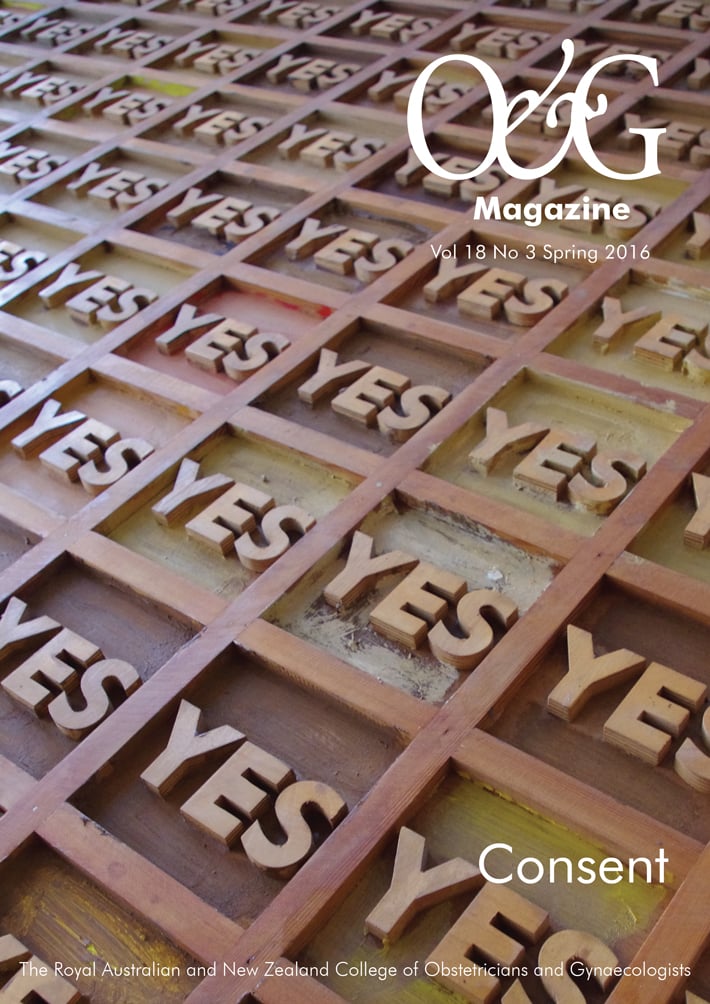Last year, the Royal Australasian College of Surgeons (RACS) made headlines around Australia and overseas when the ABC’s Four Corners program reported on bullying within surgery,1 effectively lifting the lid on a well-known problem within Australian hospitals. As a result of this publicity, RACS instigated a large-scale investigation into the extent of the issue, which led to the establishment of a plan of action to address the endemic and deep-seated culture existing within the speciality.2 Although now proactively tackling the issues,3 the reputational damage caused has not been insignificant and the impact has reverberated across the entire medical college sector in Australia and New Zealand.
Although much evidence has been produced in the UK regarding bullying in medicine 4 there has been little research undertaken in Australia or New Zealand. The research that has been undertaken suggests that the problem is replicated here5 with similar themes emerging.
In 2014, the Royal College of Obstetricians and Gynaecologists (RCOG) conducted a survey to explore the incidents of bullying and undermining among O&G consultants in the UK.6 That survey resulted in a 28 per cent response rate, of which 44 per cent responded that they had been persistently bullied or undermined. This represented 14 per cent of the RCOG consultant workforce. The reported impact on professional and personal life spans a wide spectrum, from a loss of confidence to depression, sleep disturbance and suicidal ideation. Over half of respondents reported problems that could compromise patient care.
Earlier this year, RANZCOG disseminated a survey to Fellows and trainees in order to identify the extent of bullying and sexual harassment within the O&G workforce in Australia and New Zealand. For the purpose of the survey, the following definitions were provided: ‘Workplace bullying is defined as repeated and unreasonable behaviour that creates a risk to health and safety, and; Sexual harassment is defined as an unwelcome sexual advance, unwelcome request for sexual favours or other unwelcome conduct of a sexual nature which makes a person feel offended, humiliated and/or intimidated, where a reasonable person would anticipate that reaction in the circumstances’.7
The survey was sent to 2149 Fellows and 701 trainees; of this number, 659 Fellows and 265 trainees responded – a response rate of 32 per cent. Of the total responses received, 60 per cent (552) indicated that they had been bullied in the O&G workplace. This represents 19 per cent of the combined Fellow/trainee RANZCOG workforce. In response to the question, ‘what was your role when the behaviour occurred’, 71 per cent indicated that it occurred while they were a trainee; with 34 per cent stating it had happened as a consultant (respondents were able to select more than one category). The behaviour occurred primarily in the operating theatre (51 per cent) with 47 per cent indicating it had happened in the birthing suite. The person primarily responsible was identified as a senior (>10 years practice) O&G consultant (69.5 per cent), with midwives (28.1 per cent), and junior consultants (27.8 per cent) the other main groups identified. When asked if respondents had been personally subjected to bullying in the O&G workplace in the last three years, 60 per cent (299) indicated that they had.
When asked if they had been personally subjected to sexual harassment, 12 per cent of respondents indicated that they had, with 88 per cent stating that they had not (from 861 responses). This behaviour occurred mostly when participants were trainees (74 per cent) with the person responsible generally a senior O&G consultant (76.8 per cent) and male (91 per cent). In response to the question asking if participants had observed bullying or sexual harassment in the O&G workplace, of the 851 respondents to this question, 60 per cent stated that they had. When asked if they had reported the behaviour, only 24 per cent responded in the affirmative. The reasons given for not reporting were generally related to a fear of compromising career prospects (68 per cent) with 56 per cent expressing the concern that it would make the situation worse.
The major themes emerging from the survey are very similar to those reported from other surveys, both in Australia/New Zealand and in the UK. These relate to humiliation and belittling behaviour (including shouting) that is generally perpetrated in the presence of others, including patients, peers and other health professionals. It was reported that this practice of ‘teaching by humiliation’ was common among some senior consultants and likely considered an appropriate and effective teaching method. When responding to the question about sexual harassment, respondents most commonly identified innuendo/propositioning (61 per cent) with 13 per cent indicating they had been subjected to unwelcome/inappropriate touching. So what do we make of this survey and what does it tell us about the culture of O&G in Australia and New Zealand? Although the numbers were proportionally small, there were still more than 100 people who reported being victims of sexual harassment – any number would be unacceptable and RANZCOG needs to clearly state that such behaviour will not be tolerated under any circumstances. Although the perpetrator may consider their ‘innocent remarks, jokes or good-natured teasing’ to be inoffensive, such behaviour may be deeply disturbing and intimidating to those in less-powerful positions.
A number of respondents to the survey suggested that some trainees were not ‘tough’ enough and needed to be more resilient and less sensitive. There are doubtless some instances where there has been an over-reaction to well-intended if not poorly executed feedback or remarks, however if the general principles of respectful communication are observed, these instances should be significantly diminished. Respectful communication requires providing constructive feedback in private and not engaging in displays of public humiliation. It also requires greater awareness of how behaviour or comments may be perceived by others. As with most theories, pedagogical approaches have changed over the years and methods that were once considered effective and appropriate are now found to be less so. However, recipients should also be aware that constructive feedback or performance management is not the same as bullying.
The RANZCOG Board is committed to addressing the issues arising from the survey and will be initiating a number of strategies including:
- improving complaints handling process;
- improving complaints handling process;
- developing education and training resources (including how to give and receive feedback);
- enhancing accreditation standards; and
- increasing support for those experiencing bullying or harassment.
The survey has shown that RANZCOG has challenges ahead with regard to cultural change. However, the survey also provides important information and guidance regarding the training and education needed and the most effective way to address the issues arising. Although these matters are not confined to O&G, it is the College’s responsibility to lead the changes needed within the profession and proactively promote inclusive, respectful and safe workplaces that ultimately lead to better outcomes for patients.
Further Reading
Paice E, Aitken M, Houghton A, Firth-Cozens J. Bullying among doctors
in training: cross sectional questionnaire survey. British Medical Journal. 2004;329(329):658-659.
Quine, L. Workplace bullying in junior doctors: questionnaire survey. British Medical Journal. 2002;324:878-879.
Rutherford A, Rissel C. A survey of workplace bullying in a health sector organisation. Australian Health Review. 2004;28:65-72.
References
- O’Brien K, McDermott Q, Henry A, et al. At Their Mercy: And tonight we go inside Australia’s hospitals to reveal an entrenched culture of bullying that’s endangering young doctors and patients as well. Four Corners. 2015. Melbourne: RMIT Publishing.
- RACS. Expert Advisory Group on Discrimination, Bullying and Sexual Harassment Report to RACS. 2015. Retrieved from www.surgeons.org/media/22086656/EAG-Report-to-RACS-FINAL-28-September-2015-.pdf.
- RACS. About Respect: Addressing bullying and harassment. 2016. Retrieved from www.surgeons.org/about-respect.
- Cheema S, Ahmad G, Kaliaperumal V, Naqvi S. Bullying of junior doctors prevails in Irish health system: a bitter reality. Irish Medical Journal, 2005;98:274-275.
- Askew D, Schluter P, Dick M, et al. Bullying in the Australian medical workforce: crosssectional data from an Australian e-Cohort study. Australian Health Review, 2012;36(2):197-204.
- Shabazz T, Parry-Smith W, Oates, S, et al. Consultants as victims of bullying and undermining: a survey of Royal College of Obstetricians and Gynaecologists consultant experiences. British Medical Journal. 2016. Open, 6.
- RANZCOG. Bullying and Sexual Harassment Survey. 2016.





Leave a Reply